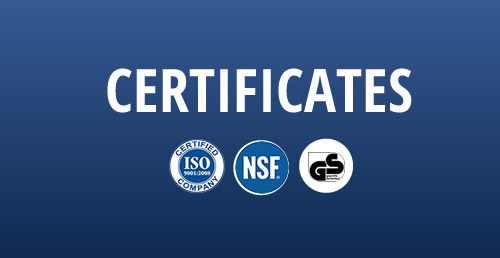Types of Steel Bracing for Structural Stability and Support Solutions
Understanding Steel Bracing Types in Structural Engineering
Steel bracing plays a crucial role in enhancing the stability and safety of structures, particularly in areas prone to seismic activity or strong winds. By transferring lateral loads, steel braces help to prevent structural failure and ensure that buildings can withstand environmental stressors. In this article, we will explore the various types of steel bracing, their applications, and their advantages and disadvantages.
1. X-Bracing
X-bracing is one of the most commonly used bracing systems in buildings. It consists of diagonal braces that form an X pattern between vertical and horizontal members of a frame. This arrangement effectively transfers lateral forces from one side of the structure to the other.
Advantages - Simplicity X-bracing is relatively simple to design and construct. - Effective Load Distribution The configuration allows for efficient load transfer, which enhances the overall stability of the structure.
Disadvantages - Material Use X-bracing can require a substantial amount of material, which may increase costs. - Space Limitations The bracing takes up significant space, which might not be suitable for all building layouts.
2. K-Bracing
K-bracing features diagonal members that connect midpoints of horizontal beams to the top corners of a vertical frame, forming a K shape. This design allows for some flexural action under lateral loads.
Advantages - Reduced Material Usage K-bracing often requires less material compared to X-bracing under similar loading conditions. - Space Efficiency The structure can utilize more interior space, making it ideal for buildings with open layouts.
Disadvantages - Complex Design The design and fabrication can be more complicated, which may increase construction time. - Load Path Issues In some cases, K-bracing may create situations where load paths are less direct, potentially leading to inefficiencies.
3. Chevron Bracing
Chevron bracing consists of diagonal braces that lean against vertical supports, resembling a V shape or chevron. This configuration allows braces to be more effective in tension, providing stability in one direction.
steel bracing types

Advantages - Effective Tension Loading Chevron bracing efficiently resists tension forces, making it particularly suitable for structures that experience one-sided loadings, such as wind. - Aesthetic Appeal The V-shape can enhance the aesthetic qualities of a building, making it a popular choice architecturally.
Disadvantages - Limited Compression Resistance Chevron bracing can be less effective in compression, which might necessitate additional supports or systems. - Potential Buckling The diagonal members are susceptible to buckling under certain conditions, which could compromise structural integrity.
4. Braced Frames with Rigid Connections
In contrast to the previously mentioned systems, some braced frames utilize rigid connections at their joints. This approach employs both tension and compression braces but relies on fixed connections to enhance rigidity.
Advantages - Enhanced Lateral Stability The rigid joints help maintain shape integrity, making the structure less susceptible to deformation under lateral loads. - Increased Load Capacity This system can support higher loads because of the enhanced rigidity at joints.
Disadvantages - Increased Complexity The design and construction of rigid connections can be complex and more costly. - Higher Maintenance Needs Rigid connections can require more upkeep over time, particularly in harsh environments.
5. Dynamic Bracing Systems
Dynamic bracing systems are more innovative approaches that utilize adjustable elements or control devices to adapt the stiffness and damping of structures in real-time, particularly during seismic events.
Advantages - Adaptive Performance These systems can react to changing loads or conditions, enhancing safety and stability. - Reduced Damage By allowing some movement during seismic events, they can significantly reduce damage to the structure.
Disadvantages - Complexity and Cost Dynamic systems can be expensive to design and maintain due to their advanced technology. - Specialized Expertise Required Implementing such systems often necessitates specialized knowledge and expertise in engineering.
Conclusion
In summary, selecting the appropriate steel bracing type is vital in structural engineering to ensure both safety and functionality. Each type of bracing offers unique advantages and challenges, and the choice largely depends on factors such as building design, location, type of loads expected, and aesthetic considerations. Understanding these options allows architects and engineers to make informed decisions that lead to resilient and robust structures.
-
Weatherproof Plastic Expansion Anchors for OutdoorNewsJun.06,2025
-
Sustainability in the Supply Chain: Eco-Friendly TEK Screws ProductionNewsJun.06,2025
-
Load-Bearing Capacity of External Insulation FixingsNewsJun.06,2025
-
Double Head Bolts: Enhancing Efficiency in Industrial MachineryNewsJun.06,2025
-
Corrosion Resistance in Chipboard Screws: Coatings for Wholesale DurabilityNewsJun.06,2025
-
Butterfly Toggle Bolts : Enhancing Structural ResilienceNewsJun.06,2025
